Gauss's Law | Physics for IIT JAM, UGC - NET, CSIR NET PDF Download
Gauss's law
The total of the electric flux out of a closed surface is equal to the charge enclosed divided by the permittivity.

Field Lines and Electric Flux
Consider that a point charge q is situated at the origin: 
This field is represented by the field line as shown in figure below.
The magnitude of the field is indicated by the density of the field lines:
- It's strong near the center where the field line are close together, and
- Weak farther out, where they are relatively far apart.
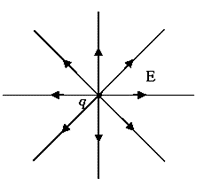
The field strength (E) is proportional to the number of field lines per unit area (area perpendicular to the lines).
The flux of E through a surface S,  is a measure of the “number of field lines” passing through S.
is a measure of the “number of field lines” passing through S.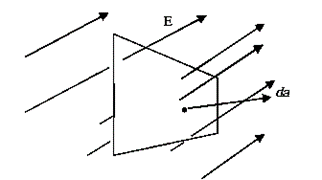
For the case of point charge at the origin, the flux of  through a sphere of radius r is
through a sphere of radius r is

Note that, any surface whatever its shape, would trap the same number of field lines. So the flux through any surface enclosing the charge is 
Now suppose that instead of a single charge at the origin, we have a bunch of charges scattered about.
According to the principle of superposition, the total field is simply the (vector) sum of all the individual fields:  The flux through any surface that encloses them all, then, is
The flux through any surface that encloses them all, then, is 
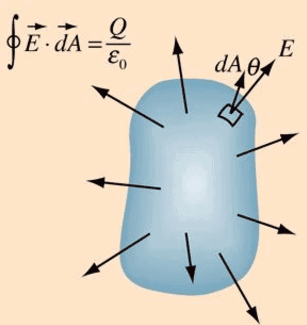
A charge outside the surface would contribute nothing to the total flux, since its field lines go in one side and out the other. It follows, then, that for any closed surface,
where Qenc is the total charge enclosed within the surface.
This is Gauss’s law in integral form.
We can convert Gauss’s law in integral form to differential form, for continuous charge distributions, by applying the divergence theorem:
We can write Qenc in terms of the charge density  , we have
, we have
So Gauss’s law becomes
Since this holds for any volume, the integrands must be equal: 
This is Gauss’s law in differential form.
Applications of Gauss’s Law
Gauss's law is always true, but it is not always useful. Gauss's law is useful for only three kinds of symmetry:
- Spherical Symmetry: Make your Gaussian surface a concentric sphere.
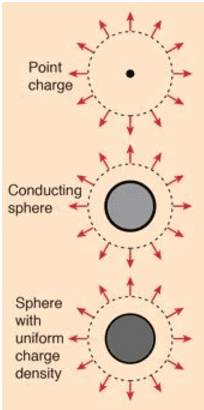
- Cylindrical Symmetry: Make your Gaussian surface a coaxial cylinder.
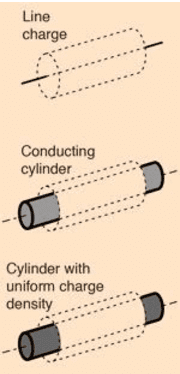
- Plane Symmetry: Make your Gaussian surface a “pillbox,” which extends equally above and below the surface.
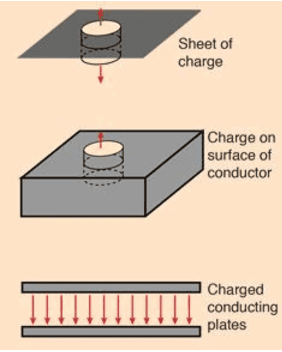
If the charge distribution lacks sufficient symmetry for the application of Gauss' law, then the field must be found by summing the point charge fields of individual charge elements.
Example 1: Find the electric field inside and outside a spherical shell of radius R, which carries a uniform surface charge density 
Solution: Draw a spherical surface of radius r < R , which is called as “Gaussian surface”. According to Gauss’s Law 

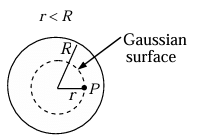
For outside point, draw a spherical surface of radius r > R ,
According Gauss’s Law 

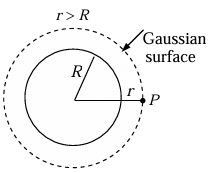
Example 2: Find the electric field a distance r from an infinitely long straight wire, which carries a uniform line charge 
Solution: Draw a Gaussian cylinder of length l and radius r. 
FAQs on Gauss's Law - Physics for IIT JAM, UGC - NET, CSIR NET
| 1. What is Gauss's Law and how is it applied in electrostatics? |  |
| 2. How can Gauss's Law be used to determine the electric field of a charged sphere? |  |
| 3. In what scenarios is Gauss's Law particularly useful? |  |
| 4. Can Gauss's Law be applied to magnetic fields? |  |
| 5. What are some limitations of Gauss's Law? |  |

















